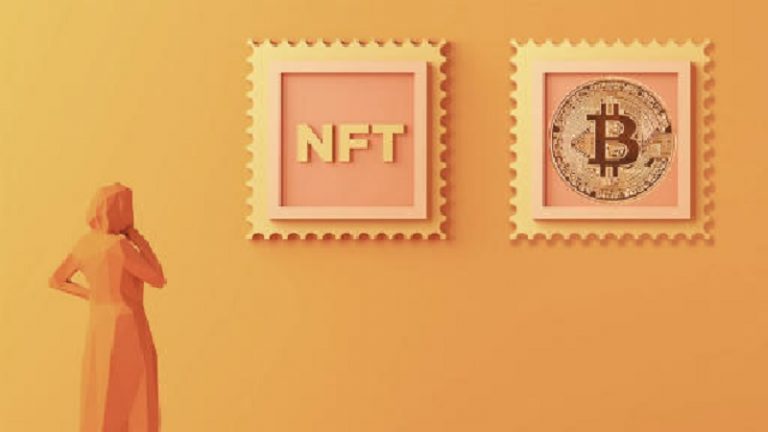
The Origins of Bitcoin NFTs
Bitcoin NFTs have a history that predates Ethereum and Solana NFTs. The concept first emerged in 2012 with Meni Rosenfeld’s paper on “Colored Coins.” This approach sought to embed additional information within Bitcoin transactions to represent various assets. However, the technology and research at the time were not advanced for practical implementation.
In 2014, Counterparty emerged as an early pioneer of Bitcoin NFTs. It introduced “The First Rare Pepes” in September 2016, a collection of collectible Pepe the Frog memes traded using Bitcoin or Counterparty’s native token (XCP). The OP_RETURN function, which allowed data storage up to 80 bytes on the Bitcoin blockchain, proved inadequate for sustaining these collectibles.
In 2023, Bitcoin NFTs gained prominence through a method called “Ordinals,” allowing the Bitcoin blockchain to securely store and transfer NFTs.
Register for Tekedia Mini-MBA edition 18 (Sep 15 – Dec 6, 2025) today for early bird discounts. Do annual for access to Blucera.com.
Tekedia AI in Business Masterclass opens registrations.
Join Tekedia Capital Syndicate and co-invest in great global startups.
Register for Tekedia AI Lab: From Technical Design to Deployment.
The Emergence of Ordinals
Ordinals, introduced by Casey Rodarmor, represent a significant advancement in Bitcoin NFTs. Rodarmor developed the “Ord” wallet, which assigns unique numbers to each Satoshi (the smallest unit of Bitcoin). Users can attach media files, such as images or videos, to these numbered Satoshis, thus creating digital assets or NFTs.
What are Ordinals?
Ordinals are that assigns a unique number to each Satoshi, allowing precise tracking and identification of Bitcoin units. This system provides greater granularity in monitoring Bitcoin movements.
What are Digital Artefacts?
Digital Artefacts are NFTs that are immutable once created. To qualify as a digital artefact, an NFT must adhere to a standard protocol for compatibility with decentralized platforms, be stored on a decentralized blockchain, and be freely transferable without external restrictions.
What are Inscriptions?
Inscriptions are digital artefacts added to Bitcoin using the Ord client. They do not require sidechains or separate tokens and can be viewed publicly via the original Bitcoin blockchain explorer.
What is the value of Bitcoin NFTs?
The value of Bitcoin NFTs is influenced by factors such as rarity, demand, and the overall Bitcoin market conditions. The reputation and experience of the creator also play a crucial role in determining value.
How to Get Started with Bitcoin NFTs
To invest in Bitcoin NFTs:
i. Run a full Bitcoin node to create, sell, or transfer NFTs on the network.
ii. Use a wallet like Sparrow Wallet to manage Bitcoin and NFTs.
Advantages of Bitcoin NFTs
Bitcoin NFTs are crucial to the growth of Web3 and and the blockchain ecosystem at large. Below are some of the benefits of Bitcoin NFTs:
Ecosystem Expansion
Bitcoin NFTs attract new creators and users, enriching the ecosystem.
Community Building
They create a community around digital collectibles, providing new monetization avenues for creators.
Innovative Use Case
NFTs offer a novel application for Bitcoin beyond its traditional roles.
Disadvantages of Bitcoin NFTs
While Bitcoin NFTs are essential for fostering Web3 growth and enhancing ecosystem expansion, they have certain limitations.
Slower Transactions
Bitcoin’s transaction speed (approximately 7 transactions per second) could lead to higher fees and longer confirmation times as NFT transactions increase.
Node Requirement
Running a full node is necessary to create, sell, or transfer Bitcoin NFTs, which may be a barrier for some users.
Selling or Transferring Bitcoin NFTs Without a Full Node
To sell or transfer Bitcoin NFTs without running a full node:
Join the Community
Engage with NFT communities, such as Discord, for minting opportunities.
Utilize P2P or OTC Trading
Connect with buyers through Peer-to-Peer (P2P) or Over-the-Counter (OTC) channels.
Make sure you are in the Discord community and have the mint opportunity.
Send crypto to the creator to help you keep the NFT in his wallet.
Use the Peer-2-Peer or OTC Trading channel to connect with your buyer.
Chat with your buyer and have a mutual agreement.
Reach out to the creator and request an escrow service.
The buyer sends the crypto to the escrow, and the escrow releases your NFT to their wallet.
The escrow releases the crypto to you.
Creating Your Own Bitcoin NFTs
To create a Bitcoin NFT:
Use the Ord Wallet
Execute the command ord wallet inscribe file.jpg to inscribe an NFT on the Bitcoin blockchain
Set Custom Fee Rates. Use ord --wallet ord-dotta wallet inscribe file.jpg --fee-rate 5 for custom fees.
Manage UTXOs: Each NFT inscription requires a separate Unspent Transaction Output (UTXO). Ensure sufficient Bitcoin to cover minting fees.
How to Evaluate Bitcoin NFTs for Investment
When evaluating Bitcoin NFTs, consider various factors similar to those for other blockchains, such as the project team, roadmap, and influential figures. However, the unique and often unconventional nature of Bitcoin NFTs can make their value harder to assess compared to Ethereum or other blockchain NFTs.
Additionally, focus on derivative or historically significant projects, as these often have higher demand and are easier to liquidate in any market.
Finally, target top Bitcoin NFTs, which are typically more expensive due to their rarity. The earlier an NFT is inscribed, the greater its demand and perceived value.
Conclusion
Bitcoin NFTs have shown promising potential since their inception, evolving from early concepts like Colored Coins to more advanced Ordinals system. While they offer exciting opportunities for innovation, community building, and expanding the Bitcoin ecosystem, their future remains uncertain. As with any emerging technology, it is crucial to conduct thorough research before investing.



